The best drawing tools for beginners: pencils, pens, and digital options
Starting out on your creative journey can seem daunting, given the wide range of drawing tools available. From traditional pencils and pens to modern digital tablets, each tool has its own advantages. This guide is designed to help beginners find the best drawing tools to suit their style, budget, and goals.
Table of Contents
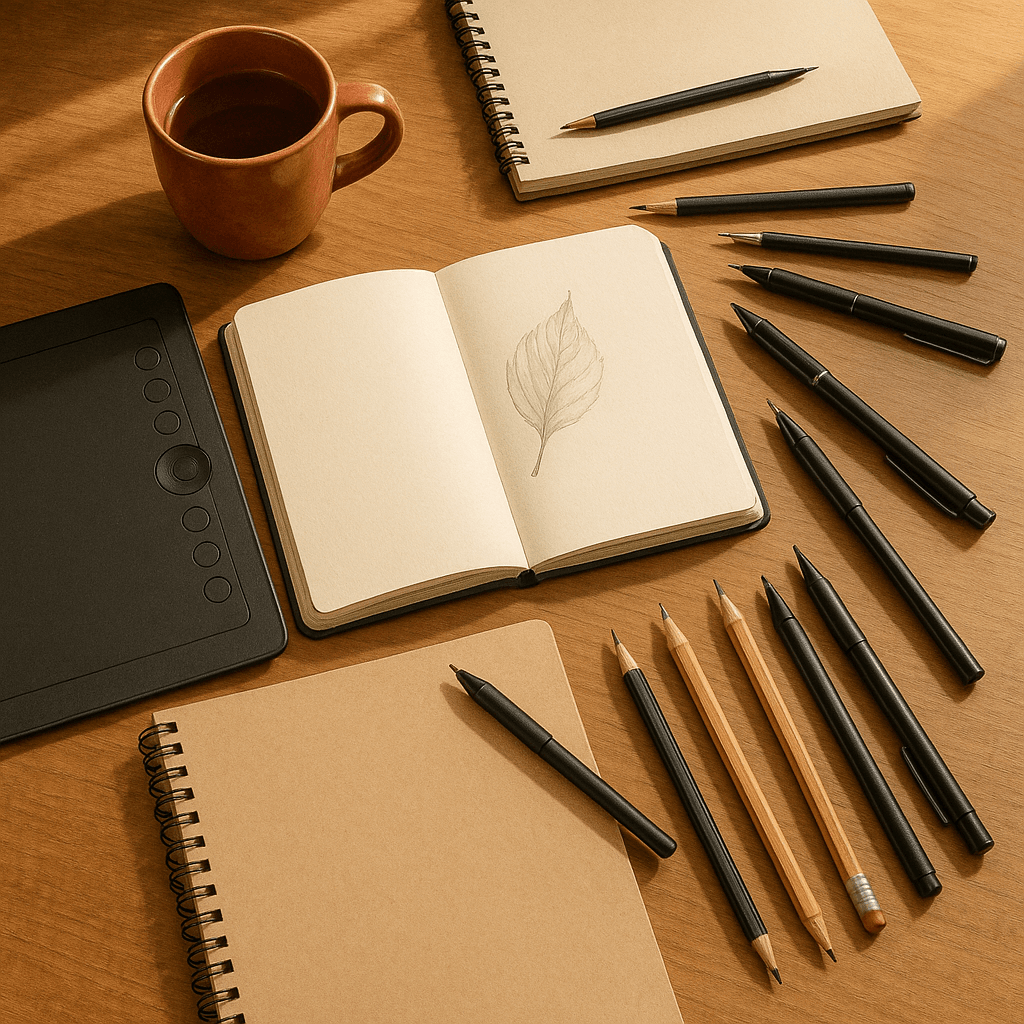
Why it’s important to choose the right drawing tools
When you’re just starting out, the right tools can make drawing easier and more enjoyable. Quality materials don’t have to be expensive, but they should help you learn techniques such as shading, working with lines and proportions without frustration. Let’s take a look at the best options available in three main categories: pencils, pens, and digital tools.
1. The best pencils for beginners
Understanding pencil grades
Pencils are classified by hardness on a scale from 9H (hardest) to 9B (softest). For beginners:
- H pencils produce lighter, crisper lines — ideal for technical drawing and fine details.
- B pencils produce darker, smoother lines — great for sketching and shading.
- HB or 2B — a versatile choice, ideal for general drawing.
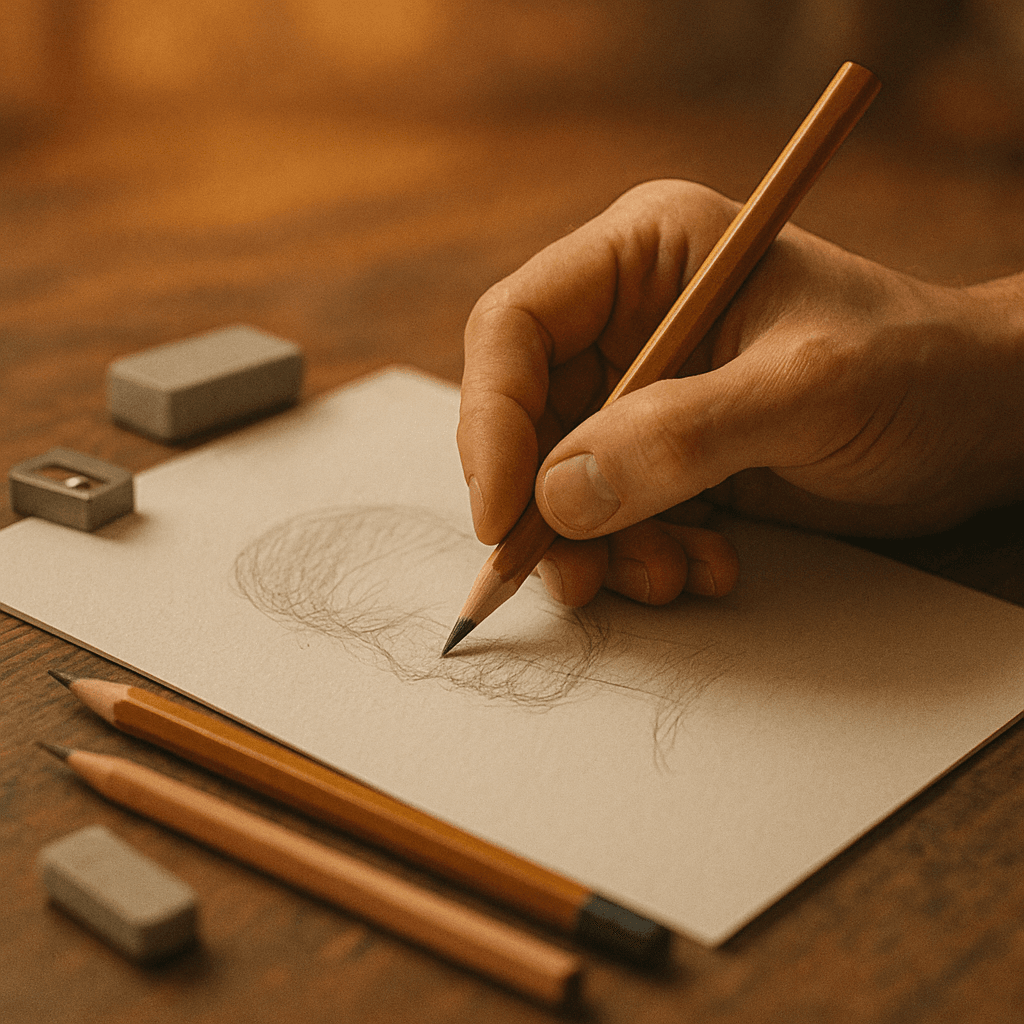
Recommended graphite pencil brands
- Faber-Castell 9000 — reliable and widely available, providing consistent quality across all grades.
- Staedtler Mars Lumograph — great for both detailed and expressive sketches.
- Derwent Graphic Pencils — a good balance between price and quality.
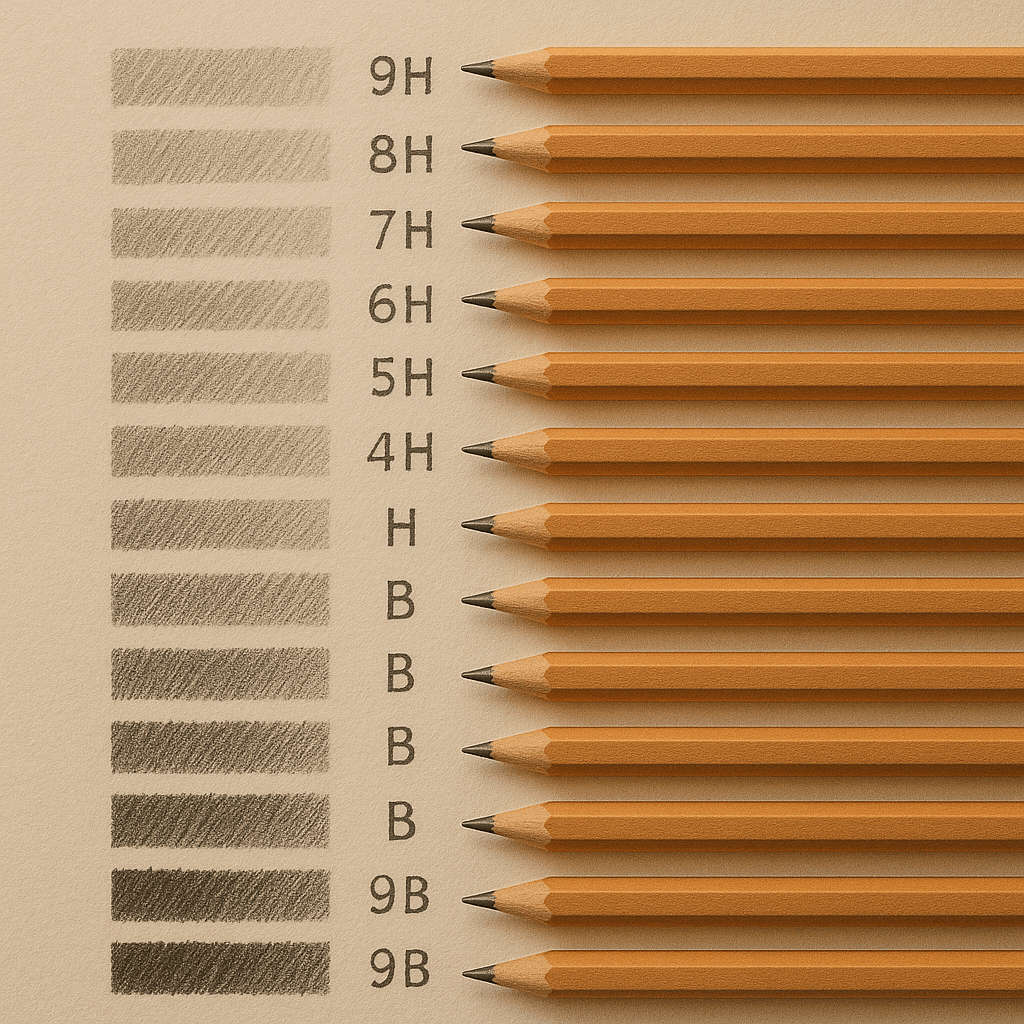
Mechanical pencils for precision
Mechanical pencils such as the Pentel GraphGear 1000 or Rotring 600 are ideal for line art and fine details. They do not need sharpening and come in a variety of lead sizes (from 0.3 mm to 0.9 mm).
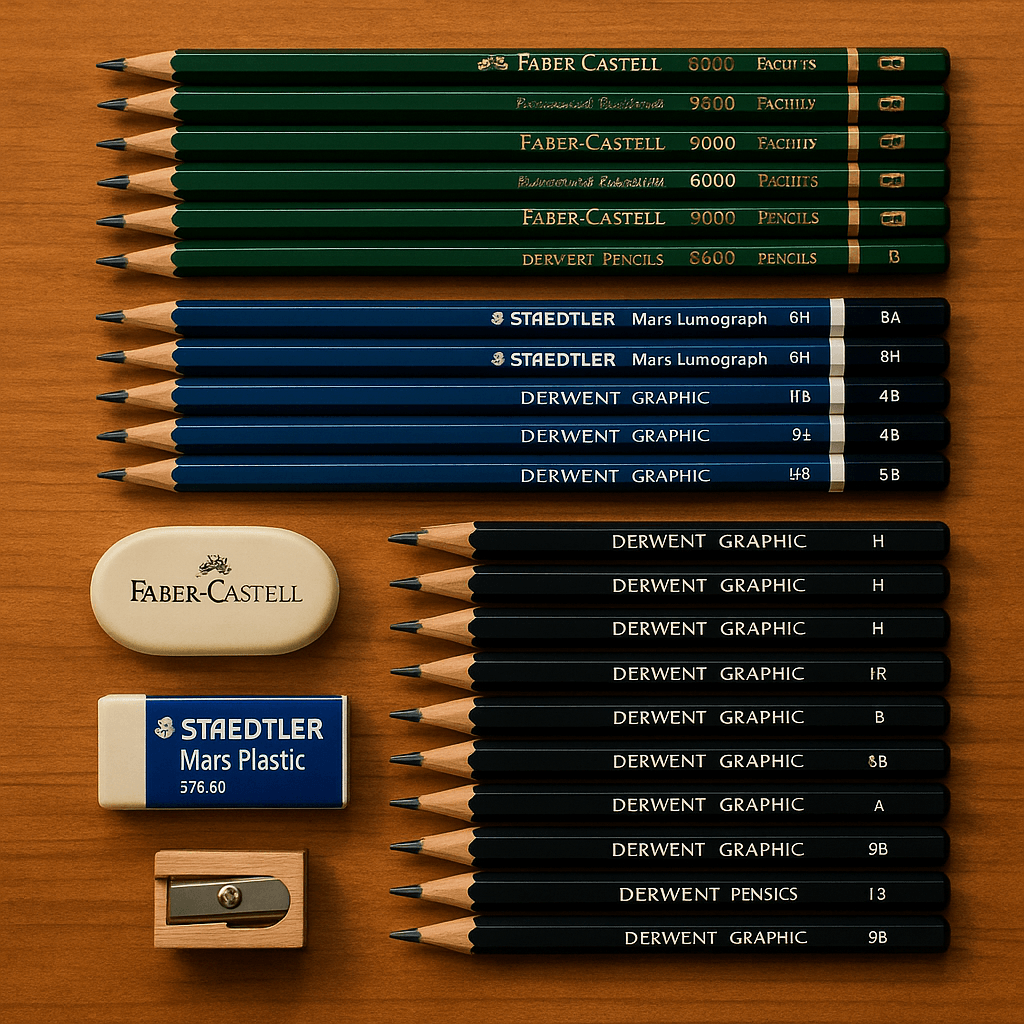
Erasers and sharpeners
Don’t forget the necessary accessories:
- Soft eraser – soft and pliable, perfect for removing graphite without damaging the paper.
- Plastic eraser – for clean and clear erasing over large areas.
- Manual or electric sharpener – keep your pencil tips sharp for better control.
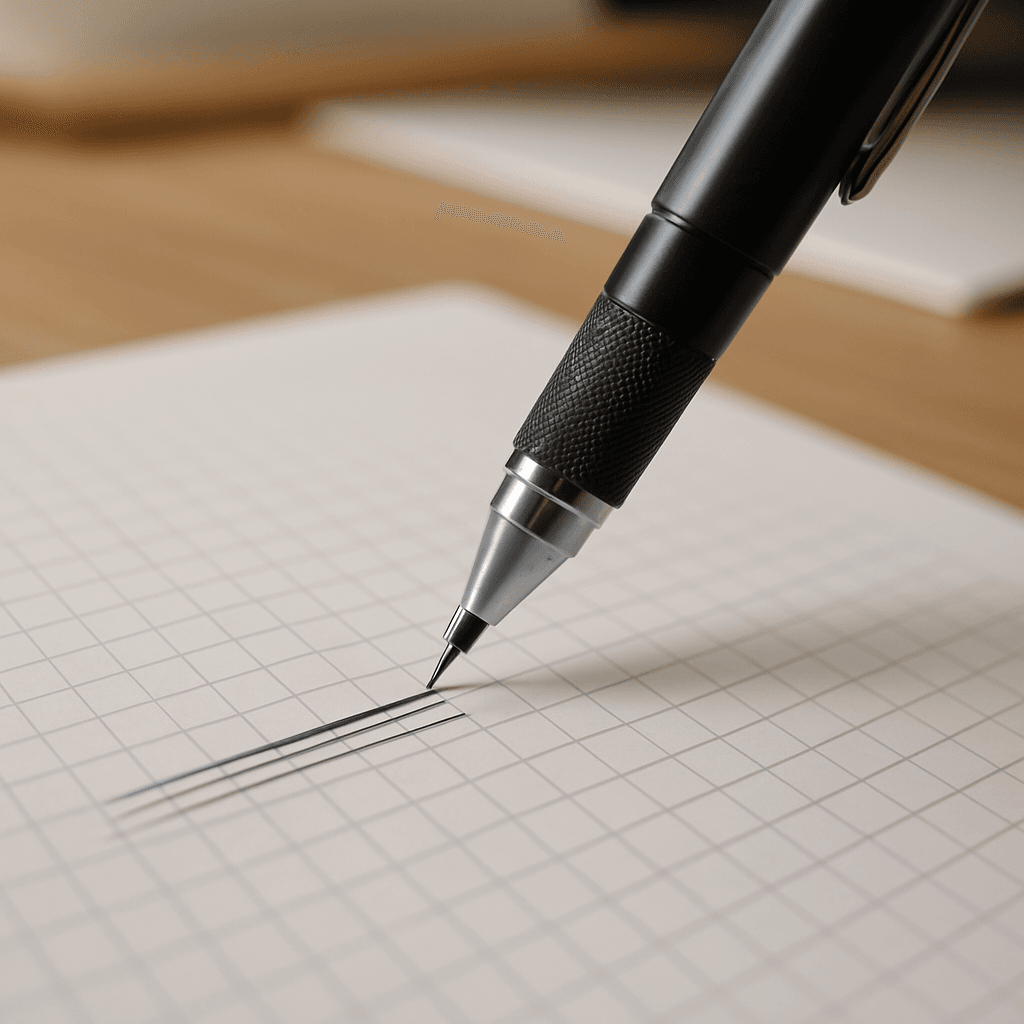
2. Best drawing pens for beginners
Types of drawing pens
Drawing pens are ideal for ink sketches, line art, and adding contrast to your work. Common types include:
- Fine liners – pens such as the Sakura Pigma Micron or Staedtler Pigment Liner provide precise lines with a variety of nib sizes (from 0.1 mm to 1.0 mm).
- Brush pens – pens such as the Pentel Pocket Brush allow you to create dynamic lines and expressive strokes.
- Technical pens – such as the Rotring Isograph, are ideal for professionals, although they require maintenance.
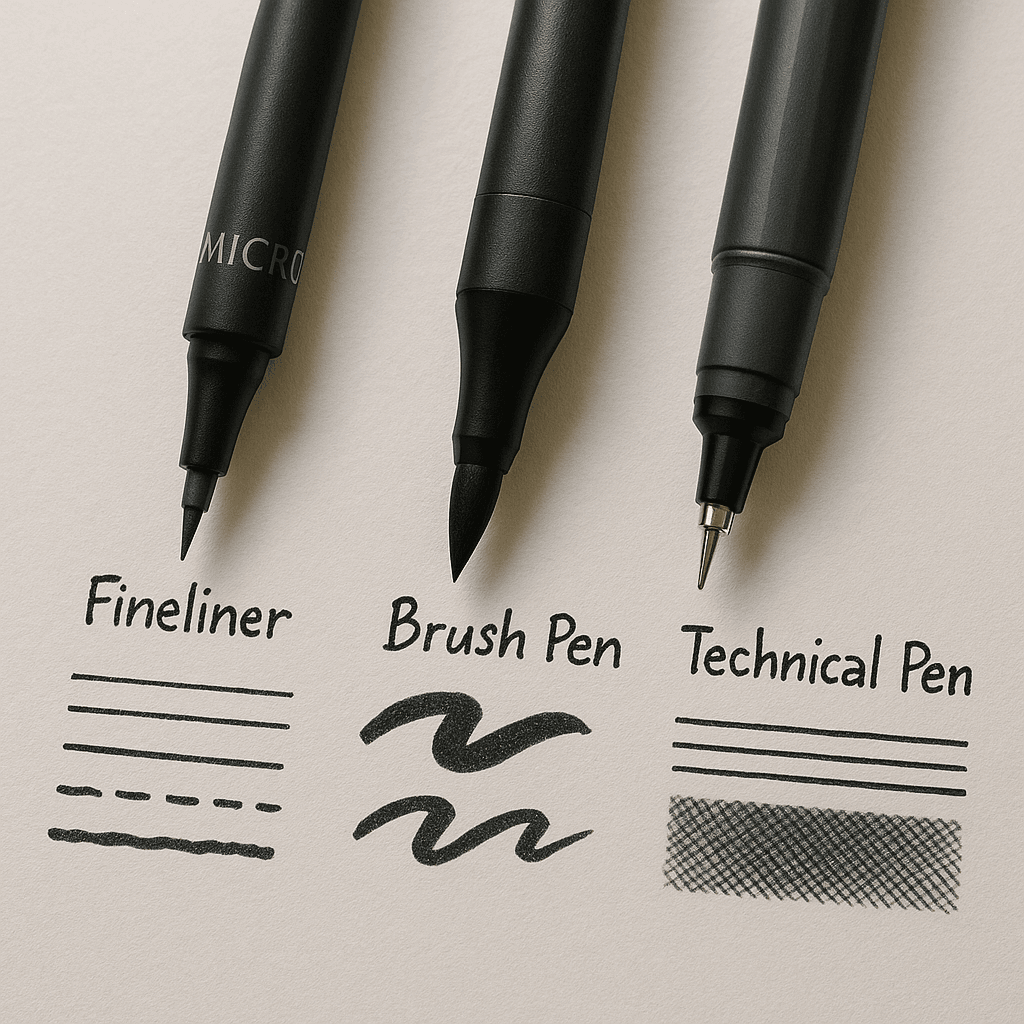
Waterproof and archival ink
Look for pens with waterproof and fade-resistant ink, especially if you plan to add watercolor or want your work to last a long time. Brands such as Sakura and Copic Multiliner offer archival-quality ink.
Recommended pen sets for beginners
- Sakura Pigma Micron Set (6 sizes)
- Faber-Castell Pitt Artist pens
- Tombow Fudenosuke brush pens
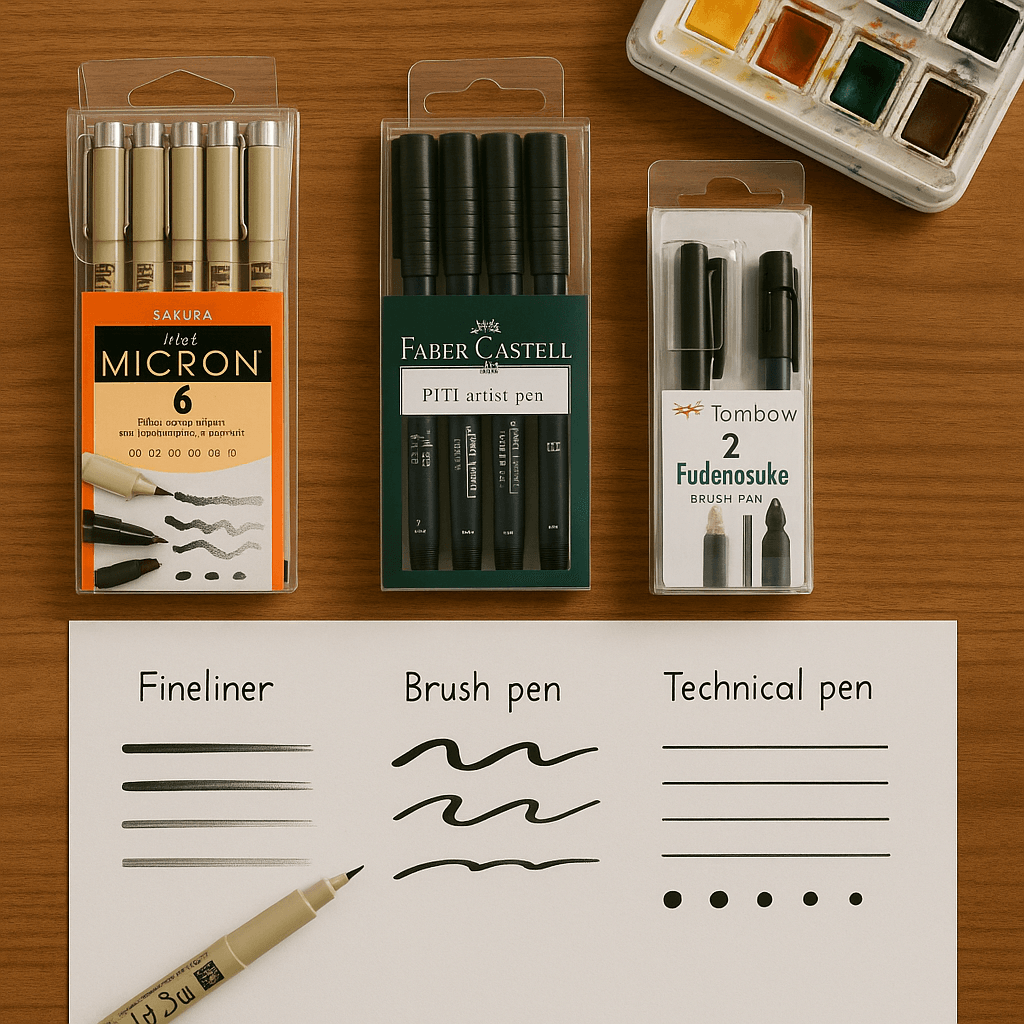
3. Best digital drawing tools for beginners
Why switch to digital?
Digital drawing offers flexibility, unlimited undo operations, and access to powerful tools such as layers, brushes, and effects. It is ideal for artists interested in comics, illustration, animation, and graphic design.
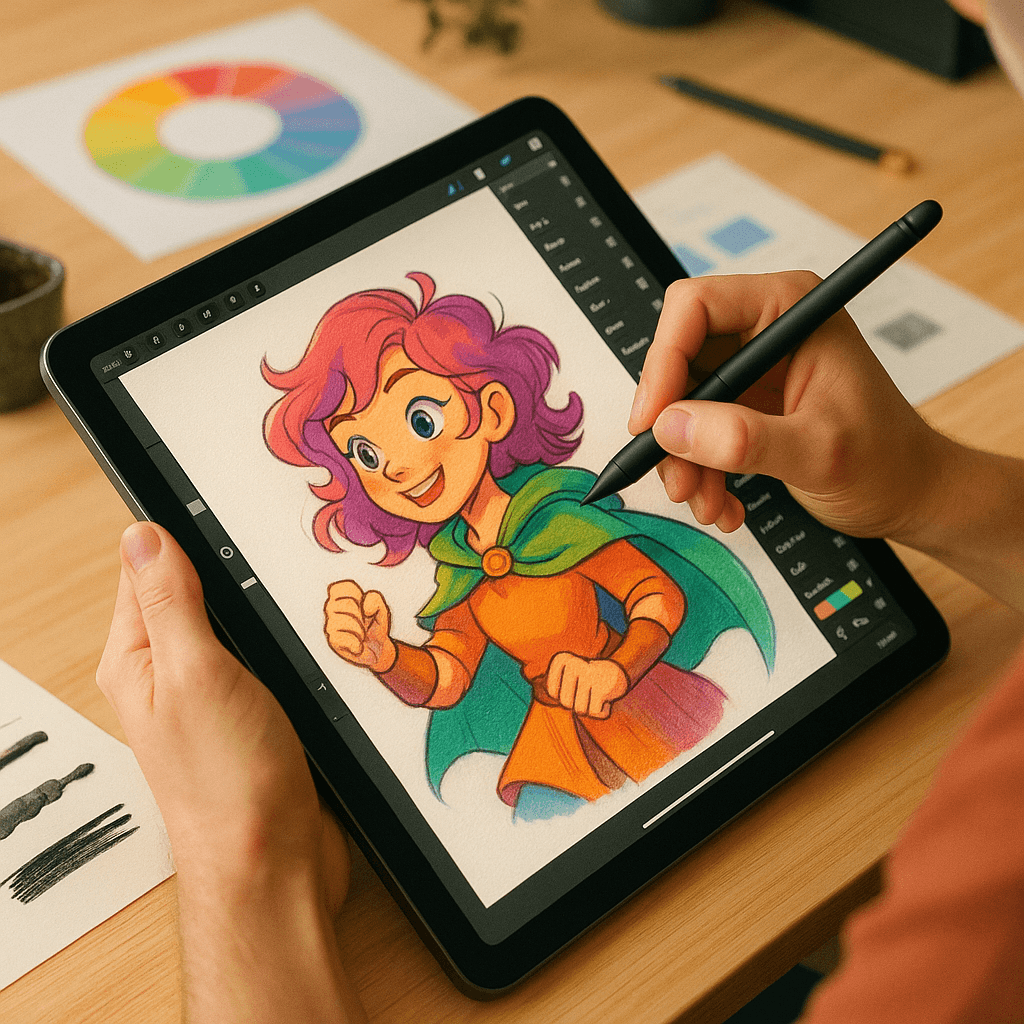
The best entry-level graphics tablets
There are two types of digital graphics tablets:
- Graphics tablets – require connection to a computer and display images on a monitor.
- Display tablets – have built-in screens and allow you to draw directly on the display.
| Model | Type | Best suited for |
|---|---|---|
| Wacom One | Display tablet | Beginners in digital art |
| XP-Pen Deco 01 V2 | Graphics tablet | Affordable and versatile |
| Huion Kamvas 13 | Display tablet | Economical display option |
| iPad + Apple Pencil | All-in-one | Portable and powerful |
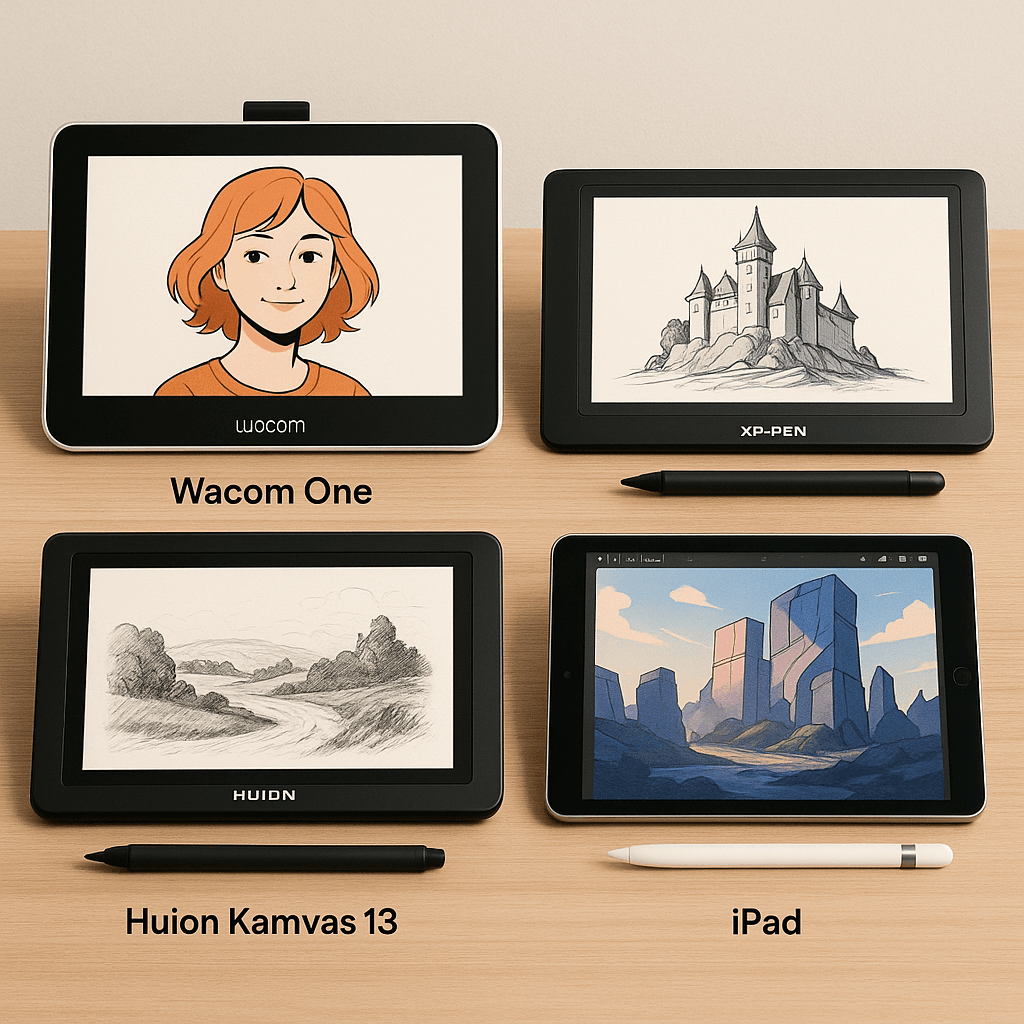
Recommended drawing software
- Krita (free, open source) – great for digital drawing and sketching.
- Clip Studio Paint – popular for comics, illustrations, and animation.
- Procreate (iOS only) – intuitive and powerful app for iPad users.
- Adobe Photoshop – industry standard, although subscription-based.
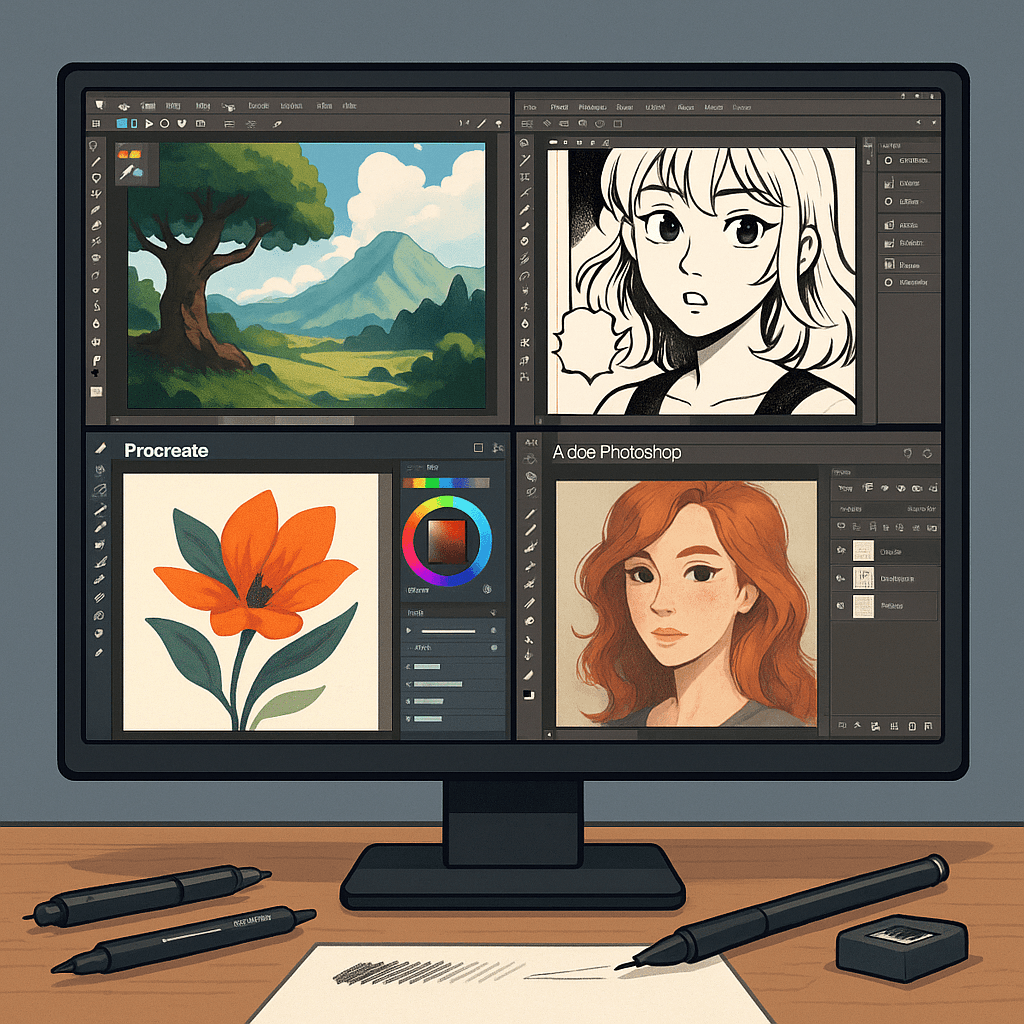
Stylus tips
Make sure your stylus has pressure sensitivity, tilt recognition, and a comfortable grip. The Apple Pencil, Wacom Pro Pen, and Huion PW517 are reliable options.
How to choose the right drawing tool
When choosing between traditional and digital tools, consider the following:
- Budget: Pencils and pens are more affordable; digital tools require a larger initial investment.
- Portability: Sketchbooks and pens are easy to carry around. The iPad offers digital convenience on the go.
- Art style: pencils for realism and sketching, pens for line art and comics, digital tools for animation and concept art.
- Learning curve: traditional tools are easy for beginners. Digital tools have more features to learn but offer greater flexibility.
List of essentials for beginners
Here is a list of essentials to get you started on your creative journey:
- HB and 2B graphite pencils
- Plastic and rubber erasers
- Set of fine-tip pens (0.1–0.8 mm)
- Sketchbook (acid-free, 70–100 lb paper)
- Optional: digital tablet + drawing software
Tips for beginners
- Practice every day – even short sessions help develop your skills.
- Copy from life – draw objects, people, and your surroundings.
- Experiment – try different tools to determine your preferences.
- Watch instructional videos – thousands of free lessons are available on platforms such as YouTube.
- Keep a sketchbook – it’s a safe space for development and experimentation.
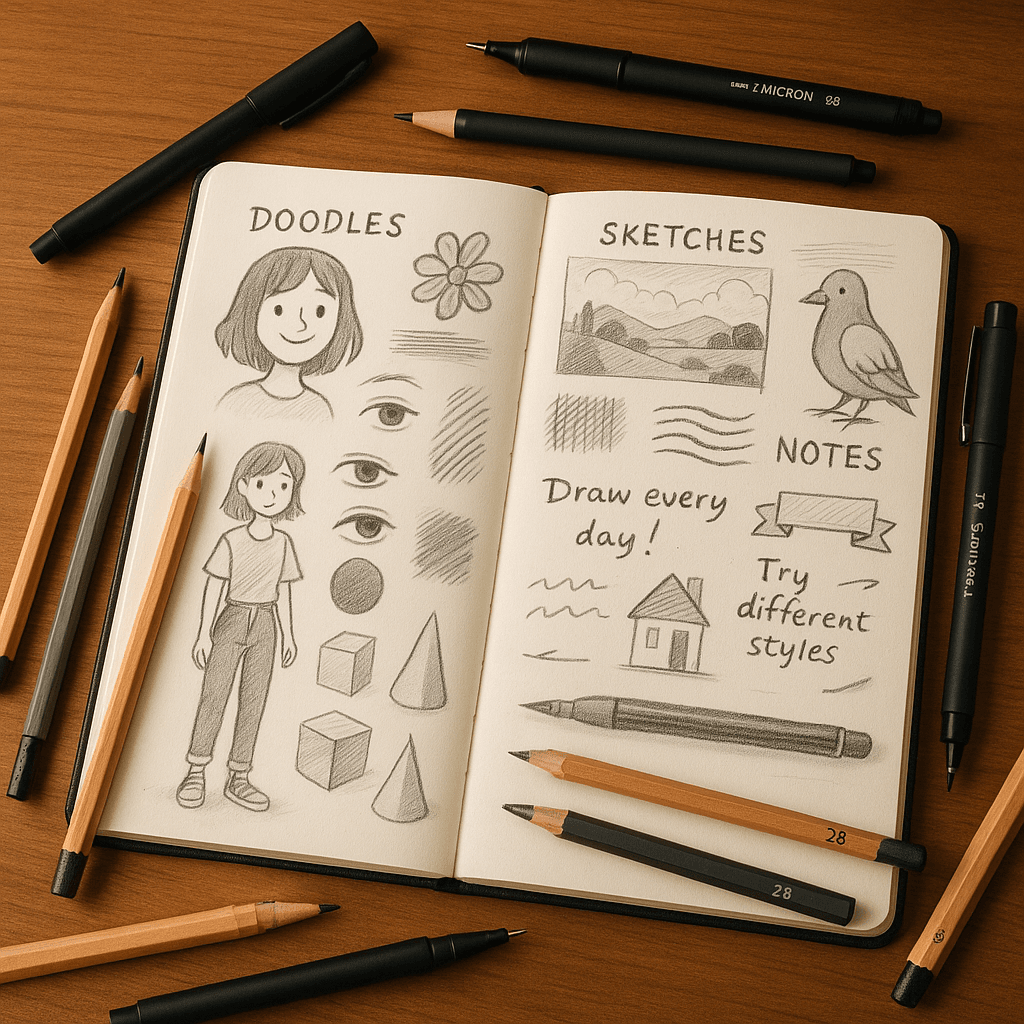
Frequently asked questions
Do I need expensive tools to start drawing?
No! Many artists start with just a pencil and paper. Skills are more important than equipment. Start simple and upgrade as needed.
Is digital drawing easier than traditional drawing?
Digital tools offer useful features such as undo, layers, and customizable brushes, but the basics of drawing remain the same. It’s a matter of personal preference.
Which is better for beginners: pencil or pen?
Pencils are more forgiving because they can be erased. Pens train your confidence in working with lines. Use both to develop your skills.
Can I learn to draw without attending art school?
Of course. There are many self-taught artists. Use books, online courses, tutorials, and daily practice to improve.
What is the best sketchbook for beginners?
Choose a sketchbook with medium-weight, acid-free paper. Brands such as Canson, Strathmore, and Moleskine offer great options for beginners.
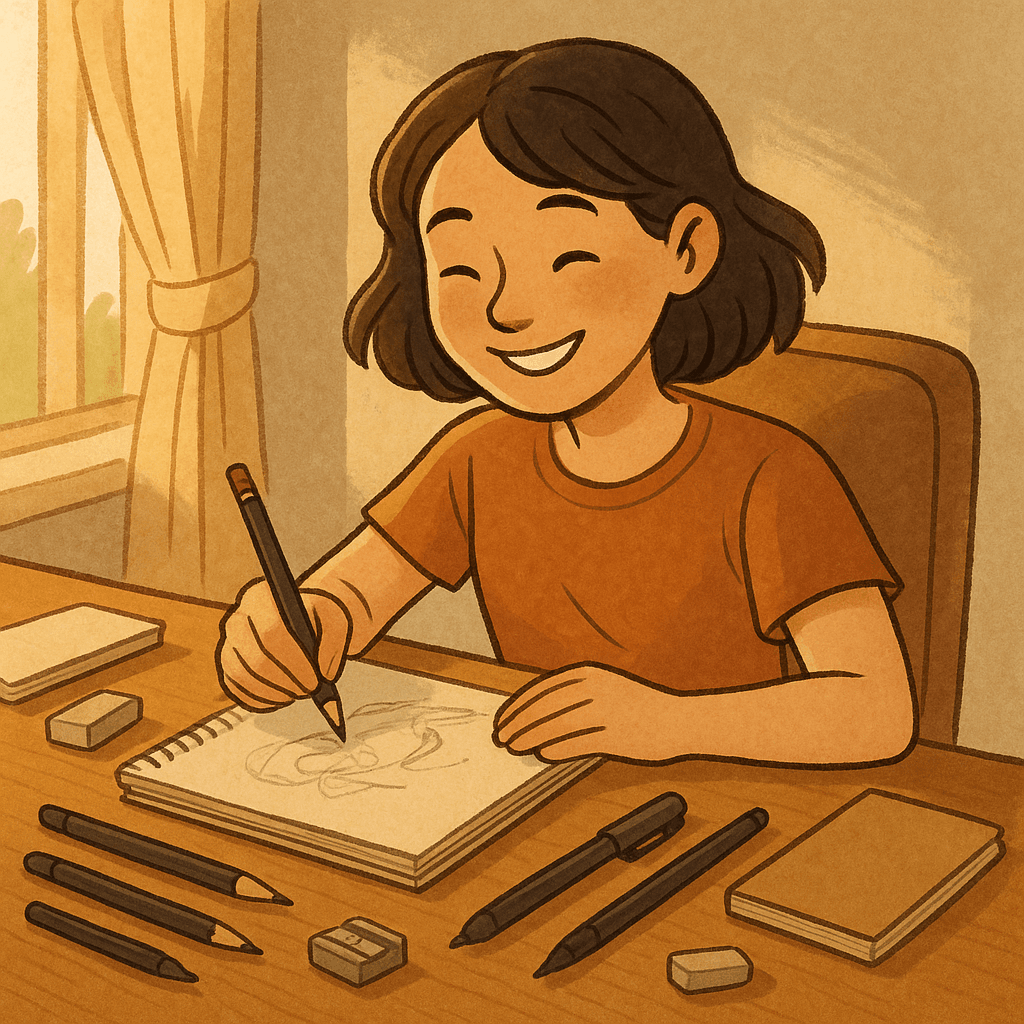
Conclusion: Start with What Feels Right
The best drawing tools for beginners are the ones that inspire you to create. Whether it’s a simple HB pencil, a set of fineliners, or a digital tablet, choose what suits your comfort and curiosity. With consistent practice and the right tools, your drawing skills will grow steadily over time.
Key Takeaway: Don’t wait for the “perfect” setup—just start drawing. The best artists are the ones who practice, explore, and enjoy the process.
